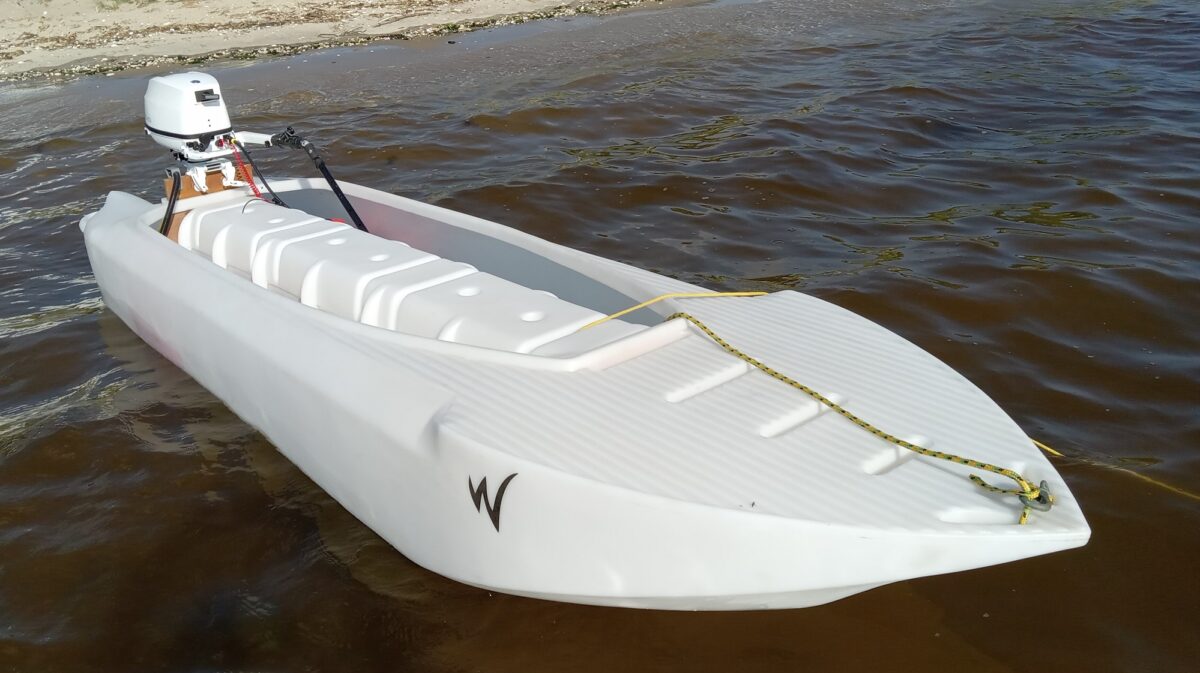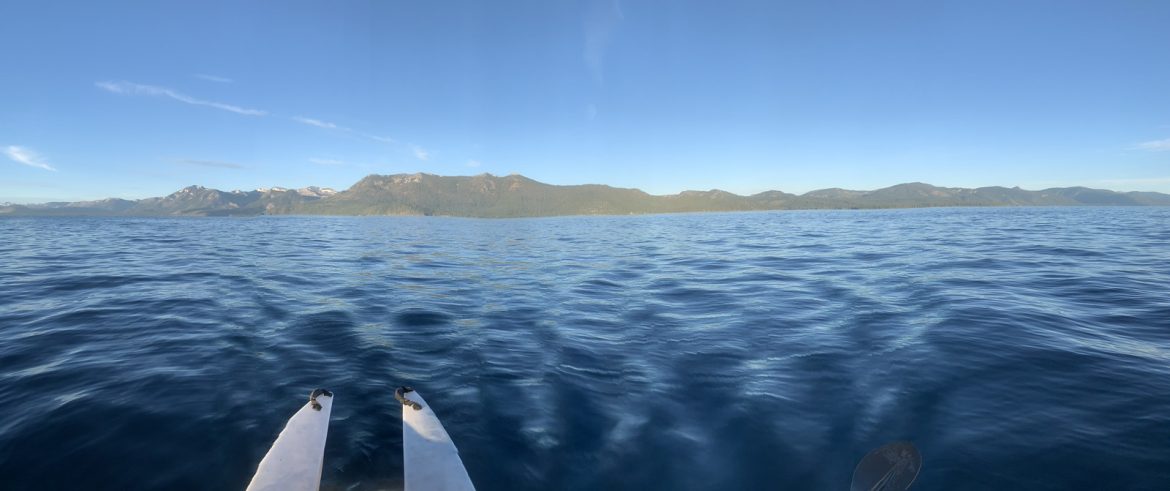KAYAKS DESIGNED TO PERFORM BETTER IN A BROADER RANGE OF CONDITIONS AND APPLICATIONS
21 miles in a kayak is a long distance, especially on lake Tahoe, which is often windy due to its 6,000 ft elevation. Anyone who wants to try paddling such a distance on that lake should choose their kayak carefully. Most paddlers capable of such a feat would opt for an extra-long and extra-narrow sit-in touring kayak, a.k.a. sea-kayak, outfitted with a rudder system, without which tracking would be hard, and maybe even impossible.
But Edwin Warner simply took his Wavewalk 700 twin-hull kayak to lake Tahoe, and crossed it from its west shore to its east shore and back in 5.5 hours. Edwin weighs about 250 lbs, and he’s not a racing kayaker. In fact, he is a kayak fisherman, whose preferred activity is crabbing in the San Francisco bay. Edwin didn’t even consider outfitting his W700 with a rudder, and no Wavewalk paddler ever did such a thing, since it’s totally unnecessary, because Wavewalk kayaks track well naturally, due to the fact that they are catamarans, and their users can relocate their center of gravity (CG) fore and aft, and thus effectively control the way the kayak reacts to wind coming from any direction, and neutralize this unwanted factor.
It didn’t occur to Edwin that fishing kayaks are not meant to go over such distances, since typically, they are sluggish and hard to paddle, and he didn’t stop to think that maybe tandem kayak with a load capacity of over 500 lbs is not exactly the optimal vessel for crossing such distances in windy conditions.
Edwin simply trusted his W700, because he’s been fishing with it in the Pacific ocean for years. He didn’t bother to get an extra-lightweight carbon-fiber paddle for this trip, because he knew that his sturdy Wavewalk paddle fits his W700, and he trusted it.
Edwin paddled this 21 mile distance in 5.5 hours, that is close to 3.82 mph in average – Not a bad time for a heavy, middle aged guy in a fishing kayak that’s less than 13 ft long. If Edwin had paddled this distance in a traditional 20 ft extra-long racing or touring kayak, his bad back would have forced him to turn around and cut his trip short.
So how is this story relevant to kayak design? It’s about the envelope of performance of the patented twin-hull kayaks made by Wavewalk – A single Wavewalk kayak can serve two large-size anglers or hunters in a long trip, where both will be seated or standing at will. They’d be able to carry on board all the gear they would need for such a trip, and progress at a good pace. And if needed, they could easily outfit their W700 with an outboard motor, and drive anywhere they want, regardless of winds and currents.
How do common mono-hull sit-in and sit-on-top (SOT) kayaks compare to this? Well, they don’t, really, since they under-perform the W700 in almost everything.
I sum, not all kayaks are equal, and Wavewalk’s patented kayaks outperform traditional, common sit-in and SOT kayaks.

